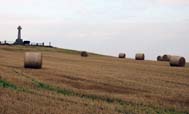For our last breakfast in Stratford, we were seated in a beautiful sunny window where we lingered a while soaking up the sunshine.
After leaving the hotel I photographed the garden and our room windows from outside. Our room was on the same side as the room we stayed in previously but high at the front [...]
Archive for the tag 'Stratford-upon-Avon'
12 Comments CherryPie on Mar 25th 2024
Once again, I chose some pick and mix options from the full English breakfast. It was interesting to see that the items were presented differently by the chef of that morning.
We drove the short distance to Evesham hoping to visit St Lawrence’s Church. After picking up leaflets from the Tourist Information office, we arrived to [...]
8 Comments CherryPie on Mar 24th 2024
Breakfast was lovely but just as quirky as I remembered it. The continental breakfast options were even more limited than they were on our previous visit where meats and cheese were available but no bread. This time there was no bread, cheese or meats, just fruit and cereals and a token croissant and cake. However, [...]
10 Comments CherryPie on Mar 23rd 2024
We had a good journey after setting off later than intended. We arrived in Stratford in time for lunch in Huffkins where I couldn’t resist the warmed almond croissant.
After lunch we walked to the butterfly farm where we found the butterflies were more active than they had been on our previous visits in 2022. We [...]
10 Comments CherryPie on Mar 22nd 2024
Filed under Holidays, Stratford-upon-Avon 2024
A Room with a View
Ted is back from his travels…
2 Comments CherryPie on Mar 16th 2024
Filed under Anecdotes, Out & About
An Evening with the Bard
I was wearing ‘Secret Bunnies’, the Bard behind me is made out of lego pieces.
However…
Getting back to the point I enjoyed my evening with the Bard at the RSC watching a delightful performance of ‘A Midsummer Night’s Dream’.
18 Comments CherryPie on Feb 16th 2024
Filed under Anecdotes, Holidays, Stratford-upon-Avon 2022
First Mini Break of 2024
We are all booked up for a mini adventure for Valentines Day. The mini break includes a very belated 2022 Christmas gift from me to Mr C. At long last there is a RSC performance that captures his imagination.
Midsummer Night’s Dream and Edward Moon here we come…
14 Comments CherryPie on Jan 1st 2024







